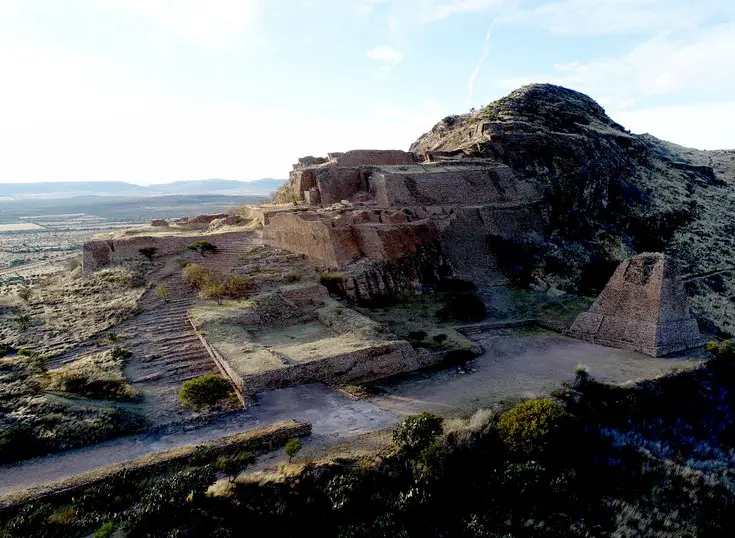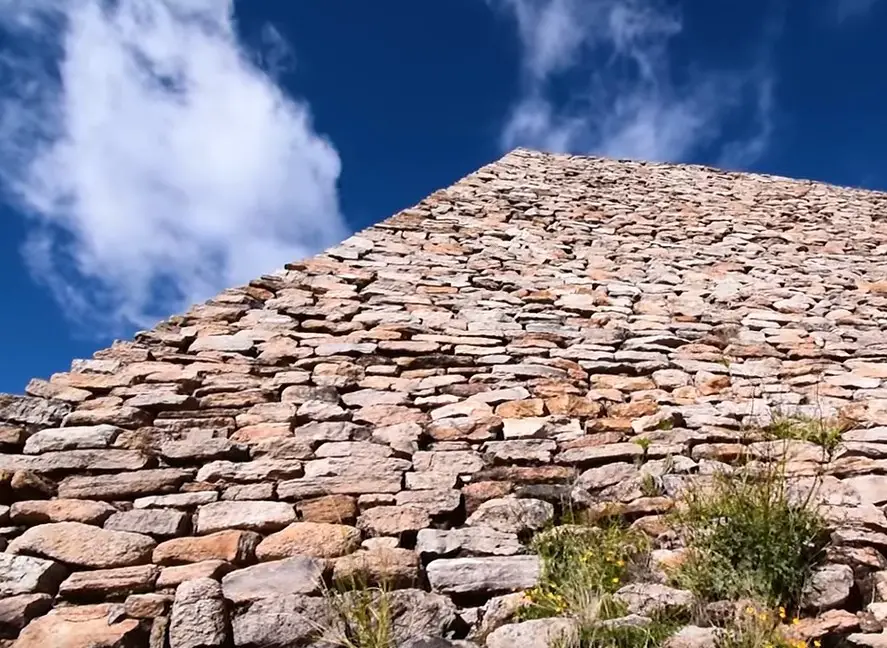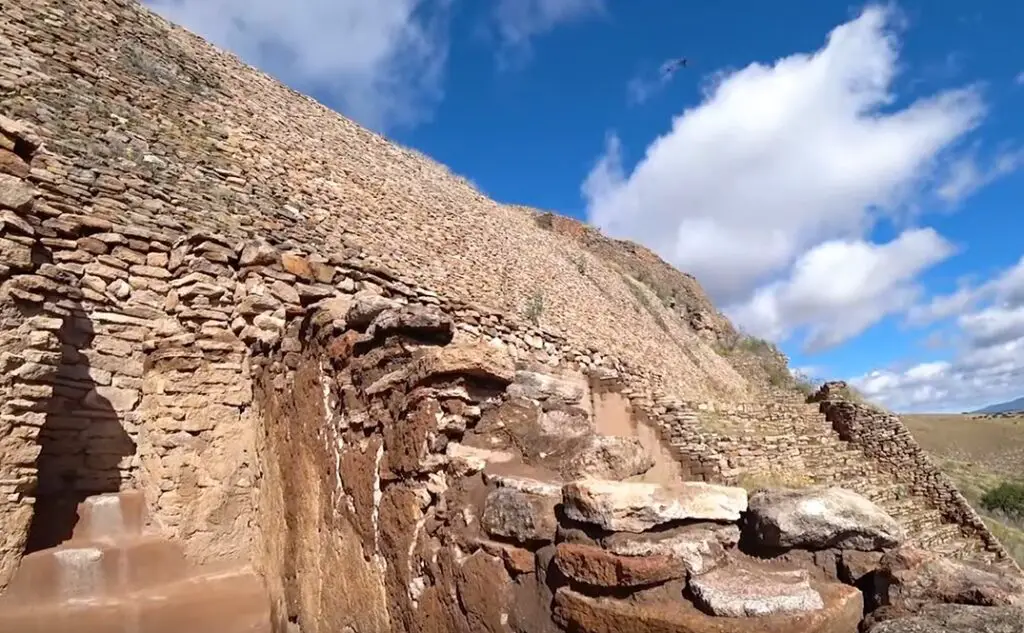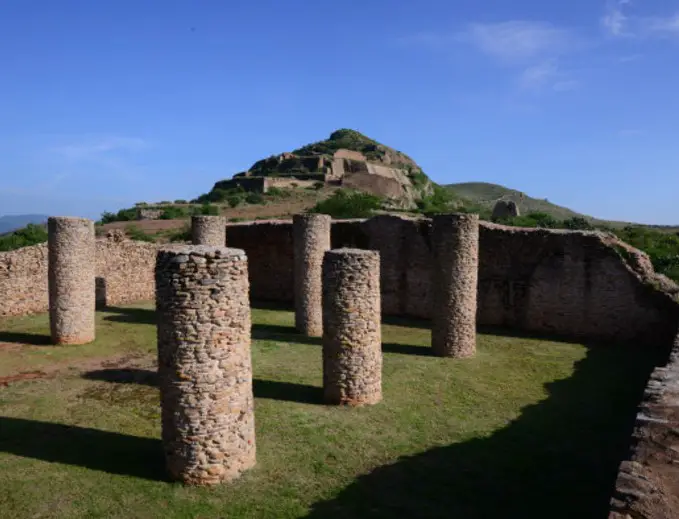Podcast: Play in new window | Download
Subscribe: Apple Podcasts | RSS
 43-year-old Carl de Berghes was excited to go to Mexico in 1825. Born in the Duchy of Jülich in the western part of what is now Germany near its border with Belgium, de Berghes worked as an engineer with the German-American Mining Association. He had studied engineering, geometry and cartography in France and was sent to the state of Zacatecas in the new nation of Mexico as part of a 20-man team to explore potential mineral deposits. In 1827 he published a detailed map of mines of central Mexico, which was the first of its kind printed in color. In 1829 he switched companies and began working for a British mining operation in Zacatecas. At almost the age of 50, de Berghes joined the Zacatecas Civil Militia and held the rank of artillery colonel. The Mexicans had been impressed by de Berghes’ life history as he had fought alongside Napoleon in the French army when he was a young man. Soon, the unassuming German caught the eye of the governor of the state of Zacatecas, a man named Francicsco Garcia Salinas. Garcia Salinas asked de Berghes to survey a mysterious archaeological site in the south-central part of his state, a place known to the locals as La Quemada. The site was the subject of many rumors, going back to the first decades after the Spanish conquest, that this interesting lost city was the true place of origin of the Aztecs. The governor, seeking enhanced status for the state of Zacatecas among Mexicans, wanted thorough research to be done at this remote and enigmatic place in hopes that it would prove the Aztec origin myths to be true. The German engineer and cartographer was happy to take on the survey project and worked at the site of La Quemada until political unrest in Mexico made him flee the country and return to Europe in 1836. Almost 20 years later de Berghes published that which Governor Garcia Salinas had commissioned him to do. With its many maps and detailed drawings, de Berghes’ book on La Quemada piqued the interest of Europeans and Mexicans alike but never seemed to answer the Aztec question.
43-year-old Carl de Berghes was excited to go to Mexico in 1825. Born in the Duchy of Jülich in the western part of what is now Germany near its border with Belgium, de Berghes worked as an engineer with the German-American Mining Association. He had studied engineering, geometry and cartography in France and was sent to the state of Zacatecas in the new nation of Mexico as part of a 20-man team to explore potential mineral deposits. In 1827 he published a detailed map of mines of central Mexico, which was the first of its kind printed in color. In 1829 he switched companies and began working for a British mining operation in Zacatecas. At almost the age of 50, de Berghes joined the Zacatecas Civil Militia and held the rank of artillery colonel. The Mexicans had been impressed by de Berghes’ life history as he had fought alongside Napoleon in the French army when he was a young man. Soon, the unassuming German caught the eye of the governor of the state of Zacatecas, a man named Francicsco Garcia Salinas. Garcia Salinas asked de Berghes to survey a mysterious archaeological site in the south-central part of his state, a place known to the locals as La Quemada. The site was the subject of many rumors, going back to the first decades after the Spanish conquest, that this interesting lost city was the true place of origin of the Aztecs. The governor, seeking enhanced status for the state of Zacatecas among Mexicans, wanted thorough research to be done at this remote and enigmatic place in hopes that it would prove the Aztec origin myths to be true. The German engineer and cartographer was happy to take on the survey project and worked at the site of La Quemada until political unrest in Mexico made him flee the country and return to Europe in 1836. Almost 20 years later de Berghes published that which Governor Garcia Salinas had commissioned him to do. With its many maps and detailed drawings, de Berghes’ book on La Quemada piqued the interest of Europeans and Mexicans alike but never seemed to answer the Aztec question.
So, was La Quemada the original home of the Aztecs or at least a stopping place on their migration to Central Mexico as some early researchers had theorized? These ideas started floating around in early colonial times. In his gigantic 1615 encyclopedic work Monarquia Indiana, or in English, “Indian Monarchy,” Franciscan friar Juan de Torquemada mentions that the site of La Quemada was used as a sort of a rest stop by the Aztecs on their long march to central Mexico. In his book, Torquemada claims that La Quemada was a city built for old people and children who could not finish the remaining 400 or so miles to that fabled island in the middle of Lake Texcoco which would later become the site of the Aztec capital of Tenochtitlan. Using Torquemada’s work over a century later,  Jesuit father Francisco Javier Clavijero theorized that La Quemada was not just a waystation for the Aztecs during their migration, but it was the legendary Chicomoztoc, the place of the Seven Caves from which the Aztecs first emerged. The site is built on the side of a small mountain overlooking the Malpaso Valley and the mountain does have caves in it. The idea of the Aztec connection persisted well into the 20th Century until proper dating could be conducted at the site. Researchers now know that La Quemada had collapsed about a half century before the Aztecs arrived in central Mexico.
Jesuit father Francisco Javier Clavijero theorized that La Quemada was not just a waystation for the Aztecs during their migration, but it was the legendary Chicomoztoc, the place of the Seven Caves from which the Aztecs first emerged. The site is built on the side of a small mountain overlooking the Malpaso Valley and the mountain does have caves in it. The idea of the Aztec connection persisted well into the 20th Century until proper dating could be conducted at the site. Researchers now know that La Quemada had collapsed about a half century before the Aztecs arrived in central Mexico.
Archaeologists believe that the site on which the ruins of La Quemada now stand was first occupied around 300 AD. Although on the edge of what would be considered Mesoamerica, the city flourished in the Classic period, reaching its height between 700 and 1100 AD. La Quemada experienced a rapid decline and by 1200 AD the city was abandoned. The site gets its name, “La Quemada,” or “The Burned,” in English, because there are remnants of a catastrophic fire that swept through the city which may have been the cause of its ultimate abandonment. Given La Quemada’s date range of occupation – 300 AD to 1200 AD – many archaeologist and other researchers have tried to associate the site with various cultures found throughout ancient Mexico. Was La Quemada an outpost of the central Mexican powerhouse Teotihuacán? Was it a northern colony of the Tarascan State? Was it an independent kingdom which took advantage of its unique location along major ancient trade routes? Was it a Toltec fortress built to protect the homeland from invading Chichimecas? Scholars are now prone to think that La Quemada was a product of the Chalchihuites culture which flourished on the northern desert and mountain fringes of Mesoamerica from about 100 AD to around 1400 AD. The name Chalchihuites comes from the Nahuatl word chalchihuitl, meaning “precious stone.” These people were semi-nomadic and settled in towns in the early centuries AD and were engaged in mining mostly for trade with the larger civilizations to the south. They had elements of the nomadic Chichimeca blended with cultural characteristics found in the highly structured societies of central Mexico at the time. Their cities reflected this in their warlike and defensive structures combined with refined pyramids, ballcourts, temples and public works of art. Researchers are not sure if La Quemada had alliances with major empires, either politically or commercially, or if it was out on its own for either part of its history or for the entire time it existed.
 What does this site look like? La Quemada sits on a series of masonry platforms on the side of a very large hill. The south and southeastern parts of the city are full of ceremonial constructions, including buildings with sunken patios and pyramids which are typical of the high civilizations to the south. What appears to be a royal palace is in the center of the city. Residential neighborhoods are found on La Quemada’s western flanks. A gigantic defensive wall shields the northern part of the city. It runs 2,400 feet long and stands 12 feet tall and almost 12 feet thick. Researchers believe that the defensive wall was strategically located in the northern part of La Quemada to help protect the city against invading northern nomadic tribes commonly known as the Chichimeca. For more information about these people, please see Mexico Unexplained episode number 142 titled Chichimeca: Warriors of the North https://mexicounexplained.com/chichimeca-warriors-of-the-north/ Most of the construction materials for La Quemada were quarried from the hill itself and consist of bricks made of a volcanic granite called rhyolite. On masonry walls a clay stucco was applied which did not withstand erosion over time. As with many other ancient sites, La Quemada shows evidence that later structures were built on top of older ones. Roads led out of La Quemada in various directions, connecting the city with not only the civilizations to the south but also with resource-rich areas to the north, west and east. In addition, the roads connected the city with smaller settlements in the immediate area that may have been linked to La Quemada through trade, politics, or culture.
What does this site look like? La Quemada sits on a series of masonry platforms on the side of a very large hill. The south and southeastern parts of the city are full of ceremonial constructions, including buildings with sunken patios and pyramids which are typical of the high civilizations to the south. What appears to be a royal palace is in the center of the city. Residential neighborhoods are found on La Quemada’s western flanks. A gigantic defensive wall shields the northern part of the city. It runs 2,400 feet long and stands 12 feet tall and almost 12 feet thick. Researchers believe that the defensive wall was strategically located in the northern part of La Quemada to help protect the city against invading northern nomadic tribes commonly known as the Chichimeca. For more information about these people, please see Mexico Unexplained episode number 142 titled Chichimeca: Warriors of the North https://mexicounexplained.com/chichimeca-warriors-of-the-north/ Most of the construction materials for La Quemada were quarried from the hill itself and consist of bricks made of a volcanic granite called rhyolite. On masonry walls a clay stucco was applied which did not withstand erosion over time. As with many other ancient sites, La Quemada shows evidence that later structures were built on top of older ones. Roads led out of La Quemada in various directions, connecting the city with not only the civilizations to the south but also with resource-rich areas to the north, west and east. In addition, the roads connected the city with smaller settlements in the immediate area that may have been linked to La Quemada through trade, politics, or culture.
There are many impressive buildings at La Quemada worth further exploration. Probably the most imposing structure in these ruins is what is now called the Votive Pyramid. The pyramid is very steep and although now partially collapsed, it once stood over 30 feet high. A temple at the top made of wood and other perishable materials probably added another 10 feet to the structure. Archaeologists working on the pyramid in the mid-1990s found the remnants of a stairway on the south side of the building. The Votive Pyramid is the largest of many pyramidal buildings at the site, many of which are mounds of rubble now. One other pyramid of note is called the Pyramid of Sacrifices. It is so named because many researchers believe that this pyramid was used by the priestly  class to sacrifice humans to appease the gods. To the north of the Votive Pyramid is La Quemada’s main ballcourt constructed in familiar letter “I” shape and measuring 210 feet by 45 feet. The walls surrounding the court are 6 feet thick and once stood about 15 feet high. The Calzada Mayor, or Grand Road of the city begins at a plaza in front of a structure called the Hall of Columns. This enclosure measures about 120 feet by 95 feet and includes 11 stone columns that stand 15 feet tall. These columns supported a wooden roof that burned during the great fire that swept through the city mentioned earlier. That Grand Road, which starts at the plaza in front of the Hall of Columns runs a full 1,200 feet long and heads outside the city where it gets narrower and intersects with smaller roads and paths. The Calzada Mayor was paved with clay and pebbles. Some 90 feet west of the Votive Pyramid a stairway was discovered which connected the various levels of La Quemada. This feature, called by modern Mexican archaeologists La Escalinata, was constructed in phases throughout the city’s history. At one point in the later years a defensive wall was constructed that cut off the stairway from the higher levels of the site. This may indicate increased attacks on La Quemada in its final days. As briefly mentioned earlier, the west side of the hill was the residential section of the city. Archaeologists have uncovered some 25 platforms here that supported living quarters for possibly over a thousand people. Researchers believe there was a building frenzy in the residential part of the city around 650 AD. Located at the highest point at La Quemada, La Ciudadela, or the Citadel is a compound of several buildings that served defensive purposes. It is clear from the number of walls and fortifications at the site that the people of La Quemada faced a formidable enemy or several enemies and despite this state of peril, they were intent on staying.
class to sacrifice humans to appease the gods. To the north of the Votive Pyramid is La Quemada’s main ballcourt constructed in familiar letter “I” shape and measuring 210 feet by 45 feet. The walls surrounding the court are 6 feet thick and once stood about 15 feet high. The Calzada Mayor, or Grand Road of the city begins at a plaza in front of a structure called the Hall of Columns. This enclosure measures about 120 feet by 95 feet and includes 11 stone columns that stand 15 feet tall. These columns supported a wooden roof that burned during the great fire that swept through the city mentioned earlier. That Grand Road, which starts at the plaza in front of the Hall of Columns runs a full 1,200 feet long and heads outside the city where it gets narrower and intersects with smaller roads and paths. The Calzada Mayor was paved with clay and pebbles. Some 90 feet west of the Votive Pyramid a stairway was discovered which connected the various levels of La Quemada. This feature, called by modern Mexican archaeologists La Escalinata, was constructed in phases throughout the city’s history. At one point in the later years a defensive wall was constructed that cut off the stairway from the higher levels of the site. This may indicate increased attacks on La Quemada in its final days. As briefly mentioned earlier, the west side of the hill was the residential section of the city. Archaeologists have uncovered some 25 platforms here that supported living quarters for possibly over a thousand people. Researchers believe there was a building frenzy in the residential part of the city around 650 AD. Located at the highest point at La Quemada, La Ciudadela, or the Citadel is a compound of several buildings that served defensive purposes. It is clear from the number of walls and fortifications at the site that the people of La Quemada faced a formidable enemy or several enemies and despite this state of peril, they were intent on staying.
In an attempt to draw in tourists, in 1996 the National Institute of Anthropology and History opened up a small museum at La Quemada to educate people on the Calchihutes culture and of the importance of the site in the grander scheme of ancient Mexico. The museum and site get fewer visitors than most comparable archaeological sites in other parts of the country. Perhaps the interest in La Quemada will increase the more researchers understand this site, but for now these ruins are still shrouded in a great deal of mystery.
REFERENCES
INAH
